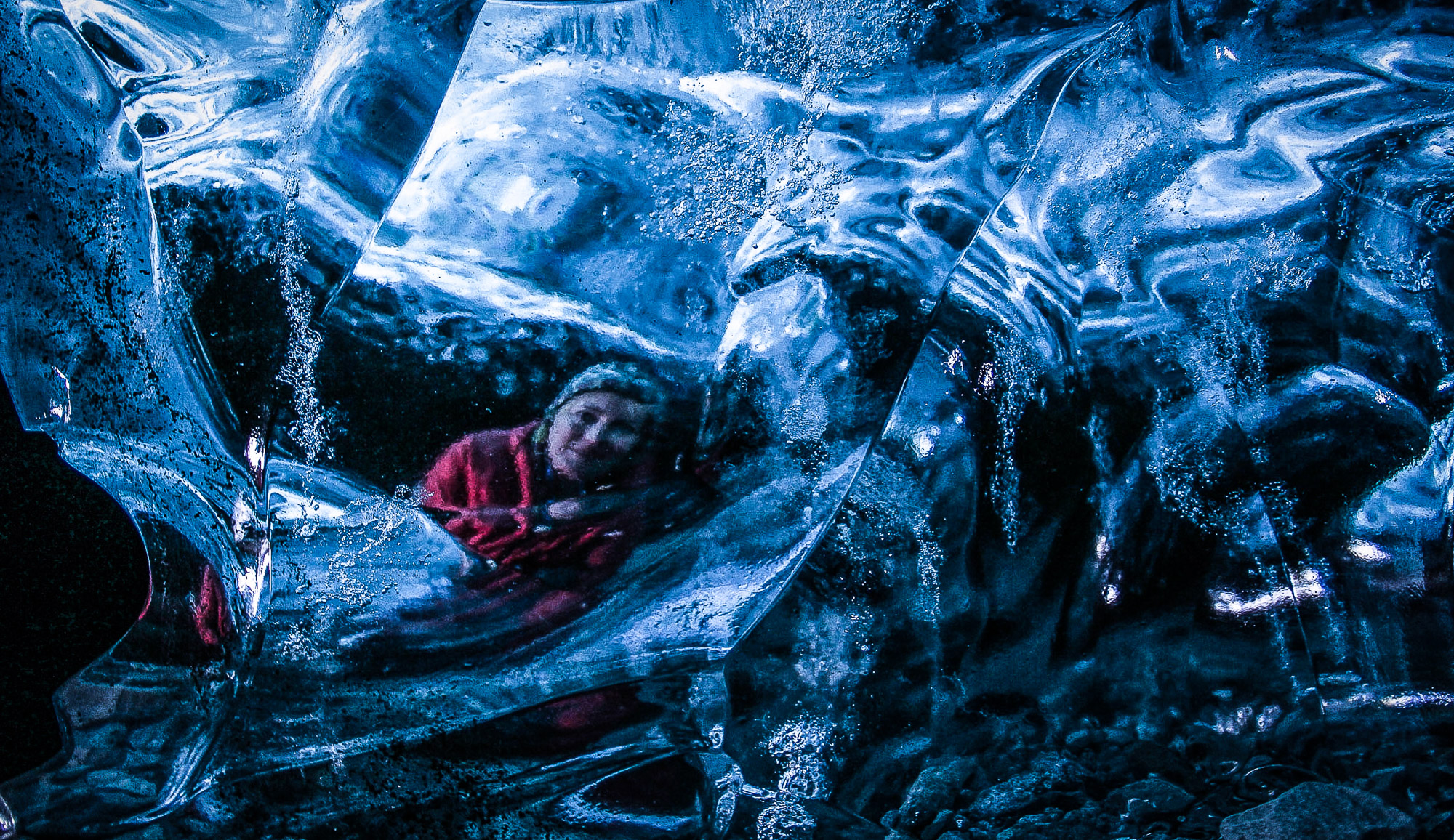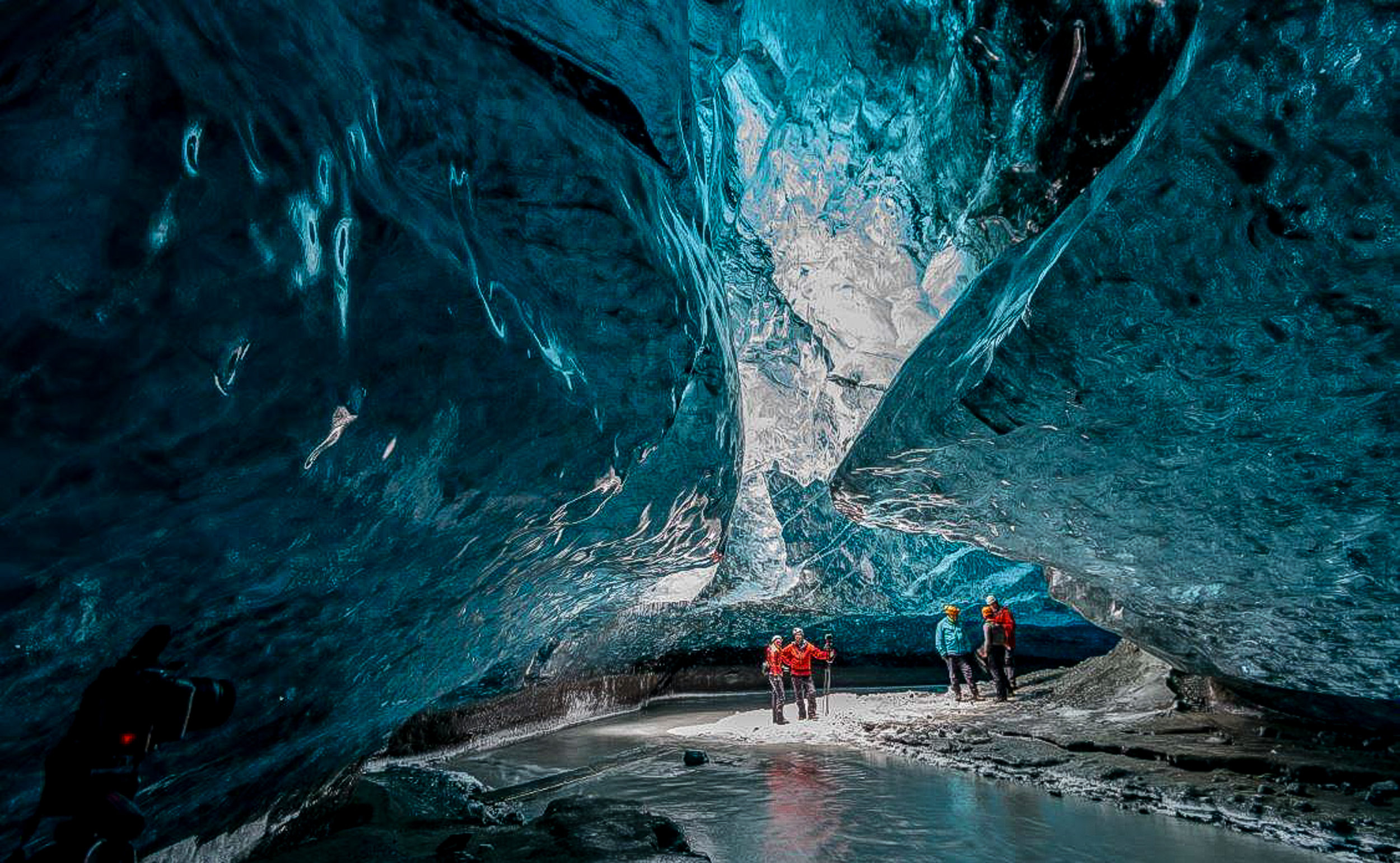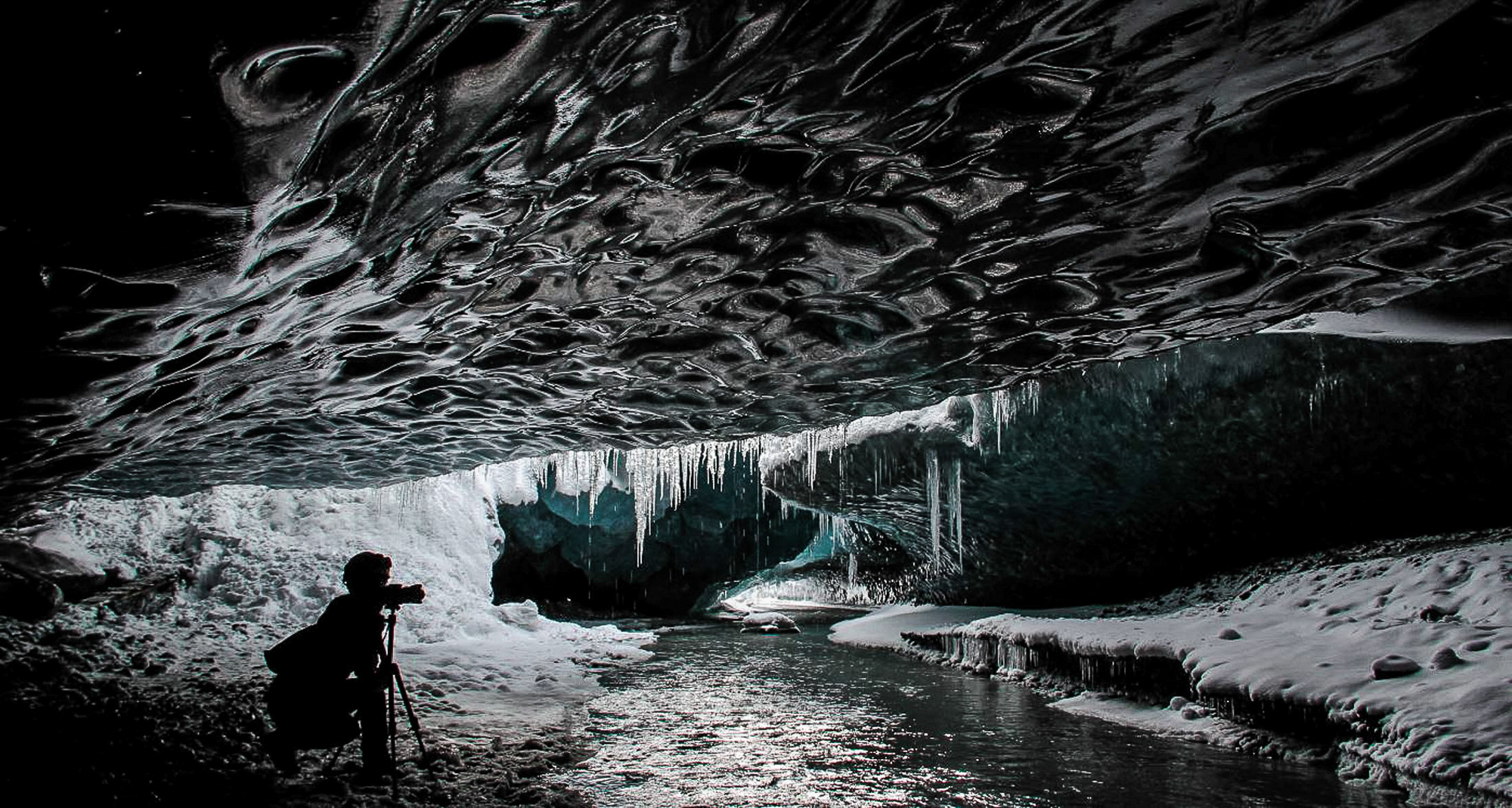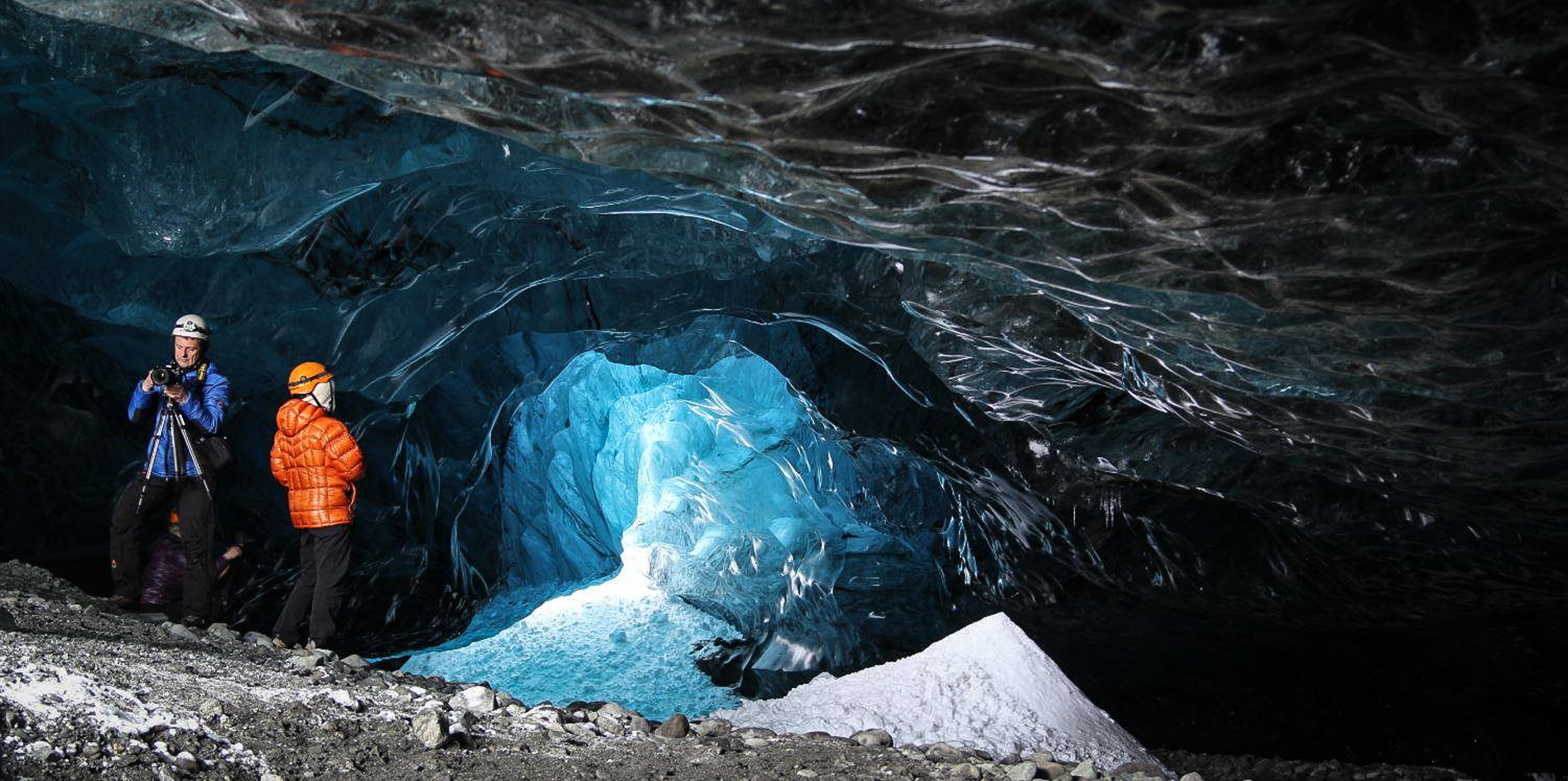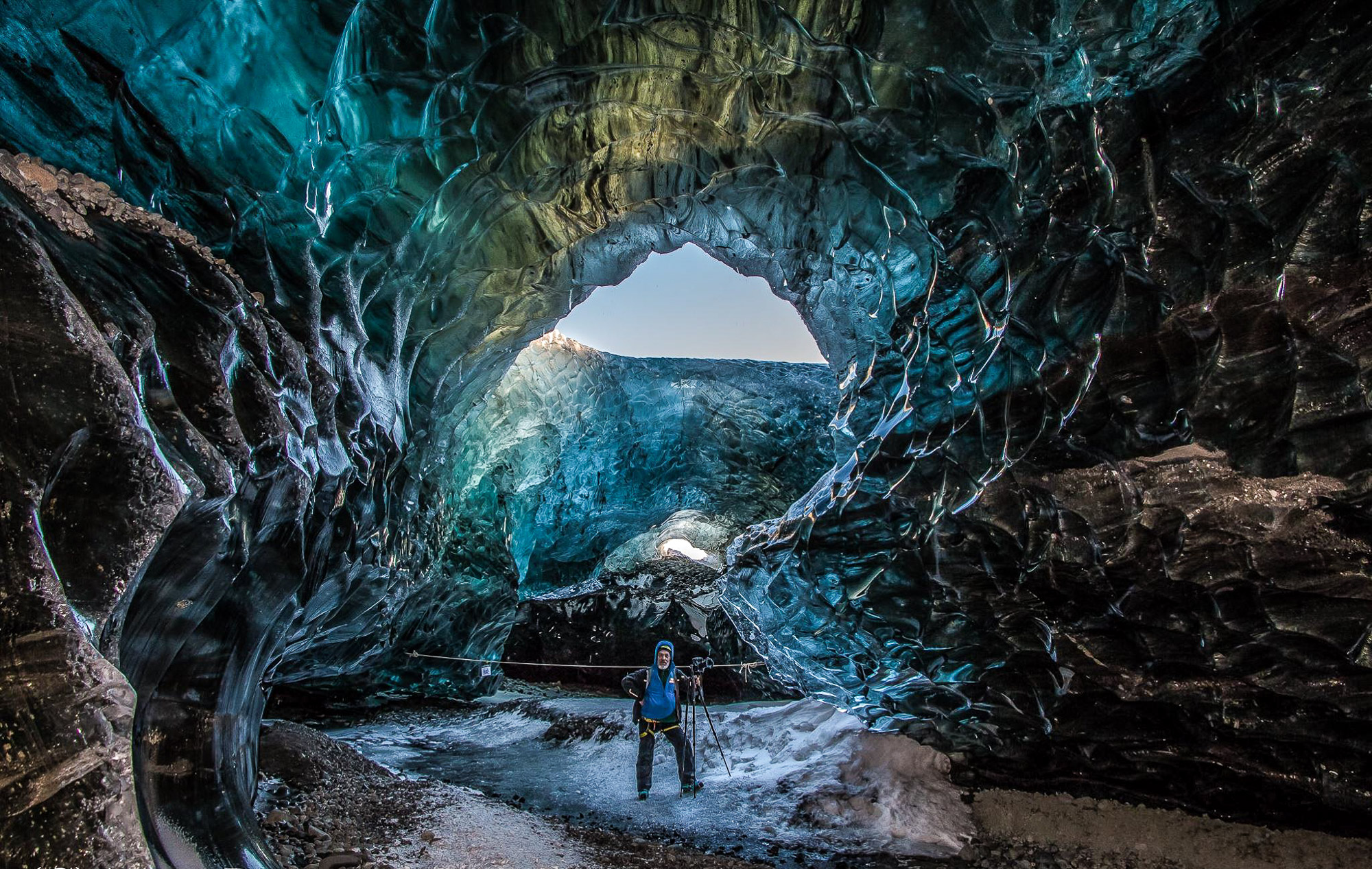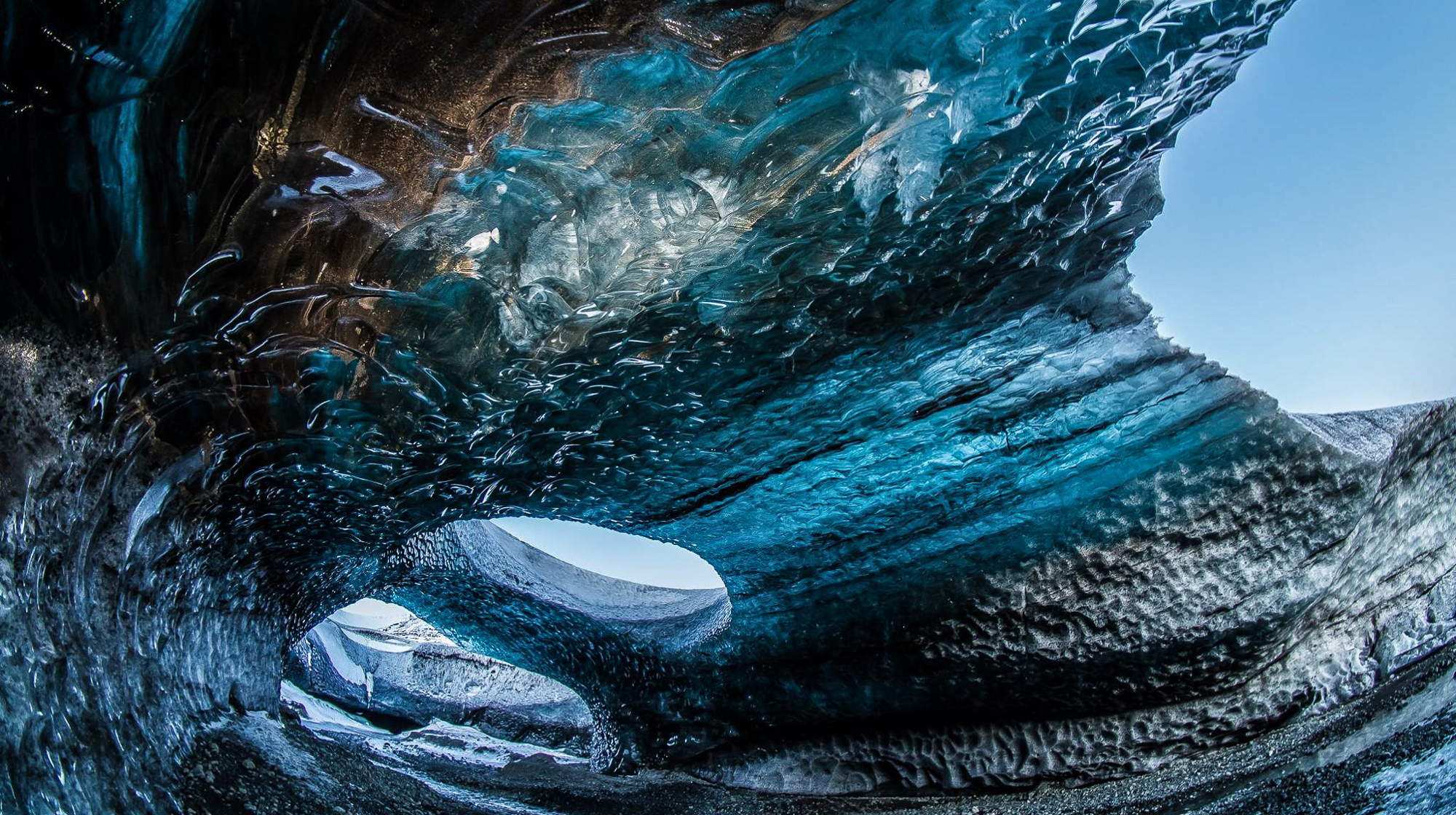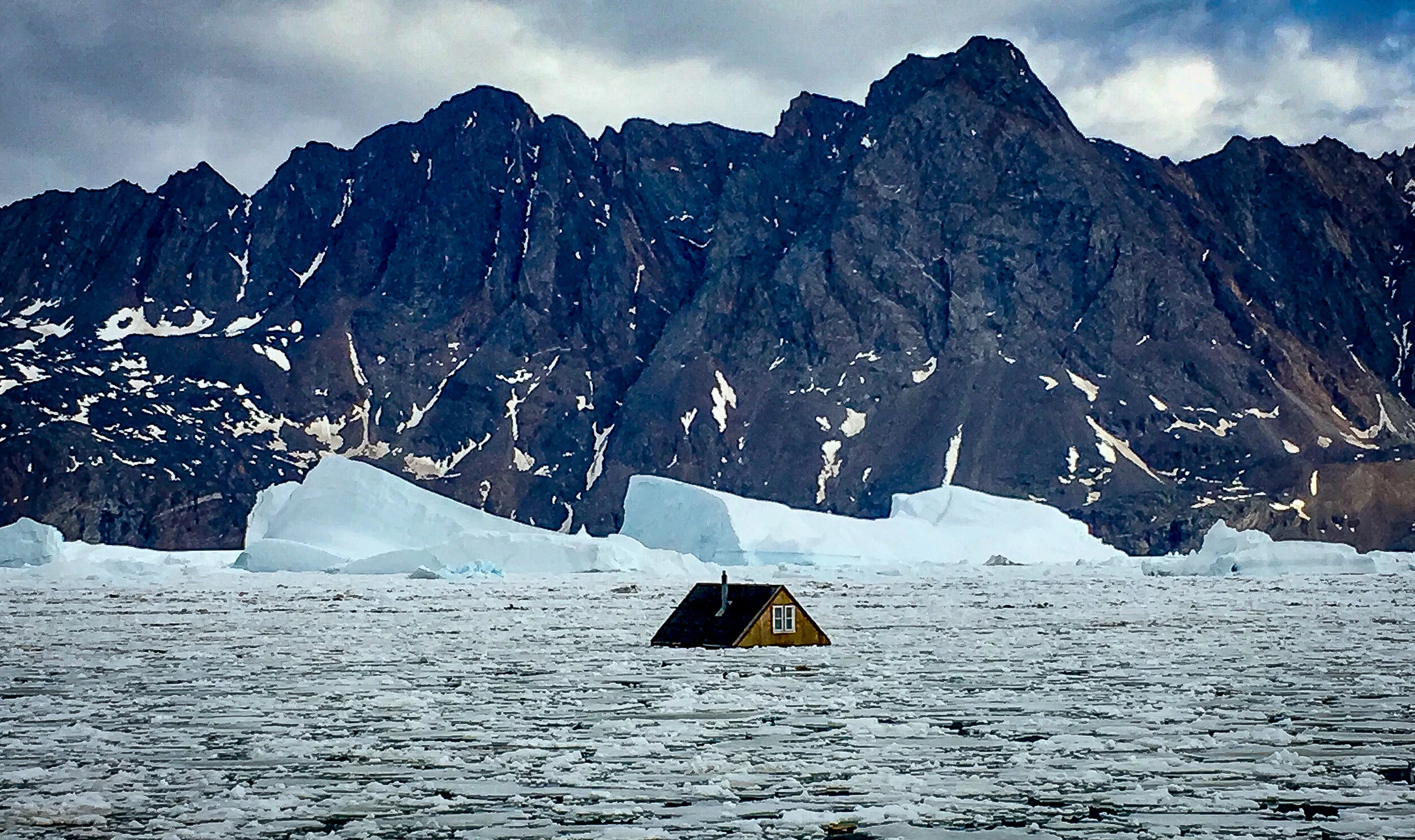Masterpieces By Mother Nature - The Glacier Caves of Iceland
ARCTIC TRAVEL / ICELAND
Writer: Vilborg Einarsdottir
Photographs: Agust Runarsson
March 2019
The remote and far away Arctic. The last frontier on earth. The region of polar bears and northern lights. The home to indigenous people, exotic cultures and the endless white. And, still that part of the planet where icebergs and glaciers are accessible. Despite the irreversible fact that nowhere else on earth is the evidence of climate change as stark and obvious with retreating glaciers, thinning sea-ice and overall melt of our frozen freshwater reserves. All the above have given explorers, adventurers and travelers good reasons to journey to the far away and remote North. And now, more are coming than ever before. Most to experience the white wonders of Arctic nature - before they melt away. This recent trend in tourism is felt all around the circumpolar Arctic. In coming months the JONAA photojournalistic team will invite readers on visual journeys to some of the amazing places in the Arctic that are still fairly accessible for the normal tourist to visit and literally get up-close and personal with High North’s reigning elements of ice and snow.
Our journey begins in Iceland, where JONAA photojournalist and long time wilderness and glacier guide, Agust Runarsson, leads us into different ice-caves. The five ice-caves in this article are, or rather were, situated in three different glaciers. All requiring some effort to reach, although Iceland also has ice-caves that are easier to access. But regardless of how to get there, ice-caves are places where tourists should under no circumstances enter without guidance and the needed security knowledge. But once inside, a magical world of surreal serenity opens up when one faces the wonder of arctic nature that ice-cave truly are.
“Personally I prefer to visit ice-caves that pose some challenge to get to. Not just because being in the the icy outdoors and crossing glacier terrain is my passion, but simply because chances are that you and your group will be alone while there. And, especially for people stepping into an ice-cave for the first time that does matter. It is such a unique experience and so much to take in. Not just the overwhelming surroundings, this surreal world where every shade of blue reflects from crystal ice formations and sculptures beyond your imagination - but because being in an ice-cave also plays with your senses. There is almost an alien kind of a silence that blends with echoing deep sounds from within the ice. Then you are breathing in the moist air and feeling the cold mist on your face and every direction you look is an out-of-this-world vision. You need stillness just to take it all in,” says Agust.
He first entered an ice-cave himself some 15 years ago. “A new world opened up for me and right there and then, it became my favourite world. It is like nothing else you can ever find yourself in and every trip is a new adventure into a new world. You are always exploring, always entering something you haven´t seen before because this is such a changing world. I was mesmerized that first time - and I still am,” says Agust. Considering that his guiding and group-leading work regularly takes him to other exotic parts of Iceland and glorious nature abroad like in Africa and South America, the comparison is strong. But ever since that first time, he says nothing has ever matched the glacier ice-caves. Since then his trips into ice-caves are close to countless; on his own, with groups, very often with photographers, filmmakers and media people - and he has even brought people to ice-caves for yoga and meditation purposes.
“For me personally, the excitement and privilege of this work lies no less in exploring the glaciers every year to find new caves or see if caves are still in the place they were the year before. Then to find out if they are safe to enter, how far one can go inside and what safety measures need to be taken before you bring other people along. That whole process is an annual challenge and a wonderful, rewarding part of the my work,” says Agust.
“But at the same time you experience a deep sorrow of seeing the devastating effects of climate change on Arctic nature. The speed at which our glaciers are melting and retreating is faster than anyone could have imagined only a decade back and it is very visible when it comes to the ice-caves. Like all parts of glaciers they melt faster, they are fewer and the ice is thinner so more are too dangerous to enter. Then, of course with retreating glaciers the ice-caves are a lot further to reach. Some are simply gone forever, like a small ice-cave I visited often. It formed around a glacier-water stream, a kind of a waterfall inside the ice where the glacier came down into a canyon. It was gorgeous but now it is gone. There is only the canyon with no ice in sight.”
“It is not just the overwhelming surroundings, this surreal world where every shade of blue reflects from crystal ice formations and sculptures beyond your imagination - being in an ice-cave also plays with your senses”
Most people come with an idea of what they will see from looking at pictures of glacier caves. But in reality, no one is quite prepared for the magic that awaits. JONAA©Agust Runarsson
Arctic nature is one of constant changes and the formation of ice-caves can differ greatly from one year to the other. Both in terms of where they form and how they form. Due to thinning and retreating glaciers because of climate change, ice caves that are safe to enter are becoming fewer and the period to safely visit them shortens every year.
The most basic explanation of an ice-cave is that it is a labyrinth or dome of ice forming inside a glacier, over a stream of melting glacier water in summer, accessible through an opening where the water finds its way from under the glacier.
When these streams then freeze in winter and the dome remains, the ice cave is formed. Once frost has lessened the dangers of ice breaking from the ceiling, that is the time when the ice caves, those surreal and magical wonders can be visited.
“A camera is as essential on an ice-cave trip, as the safety helmet,” says Agust Runarsson. “If for no other reason than simply the fact that words will not be enough to describe the surroundings. One needs the visual language to do that.”
Agust who has photographed ice-caves for over a decade says he still feels the thrills when doing so. “It is best described as a combination of amazement, humbleness and pure joy, and that has never changed.” But he also says the effects of climate change are stark in the caves and already limiting greatly the period of year when ice-caves are safe to enter.
“But,” he adds, “although we have fewer caves, where they are the beauty and the glory is all still there and ice is an ever changing element of Arctic nature. A cave you revisit with even only days in between, may look quite different than when you were there the last time.”
“The colour palette of the ice may even change while you are there. It runs from pale bluish-white tones, to bluer and bluest, sometimes with strong turquoise tones reflecting and at other times it goes to blue green and into dark green.
An ice-cave is lit by daylight coming down through cracks or holes in the surface ice above and reflected by the crystal ice and the snow within the cave.
The clarity and “cleanness” of the ice plays an important role and it matters greatly if there is volcanic ash in the ice, sand or snow on the ice and on the ground of a cave. But it really is the strength of the sunlight that gets through that is the dominant decision maker of the colours inside an ice cave.” says Agust and we leave it to his amazing pictures to describe this magic inside the glaciers of Iceland. ▢
Agust Runarsson has been on the JONAA team of photojournalists since the beginning, specialising in nature and travel photography. With a lifelong career in travel and tourism in Iceland and abroad, Agust runs the Iceland Magic travel company and specialises in private tours, glacier tours, horseback tours and travels into the highlands of Iceland.


